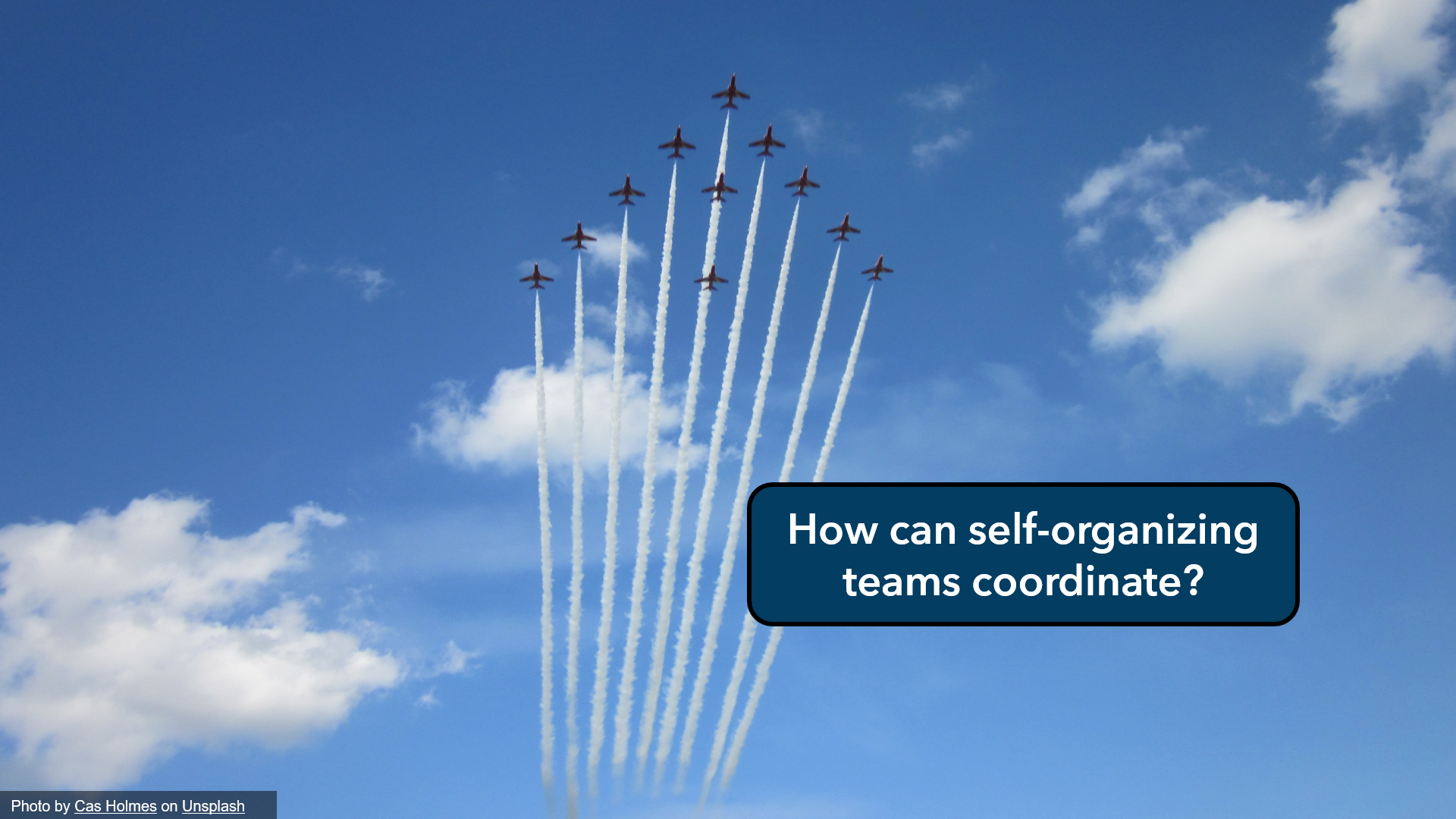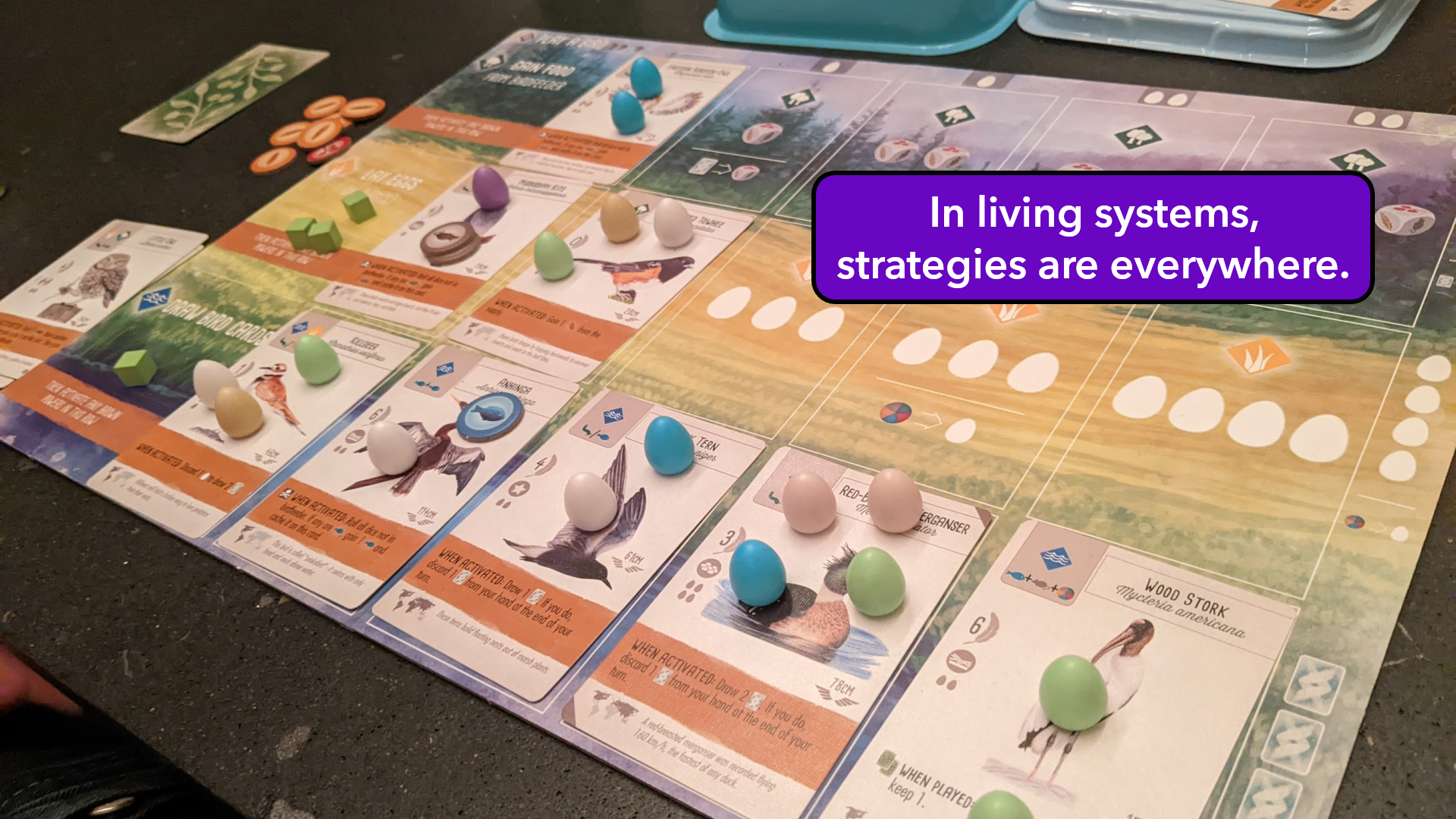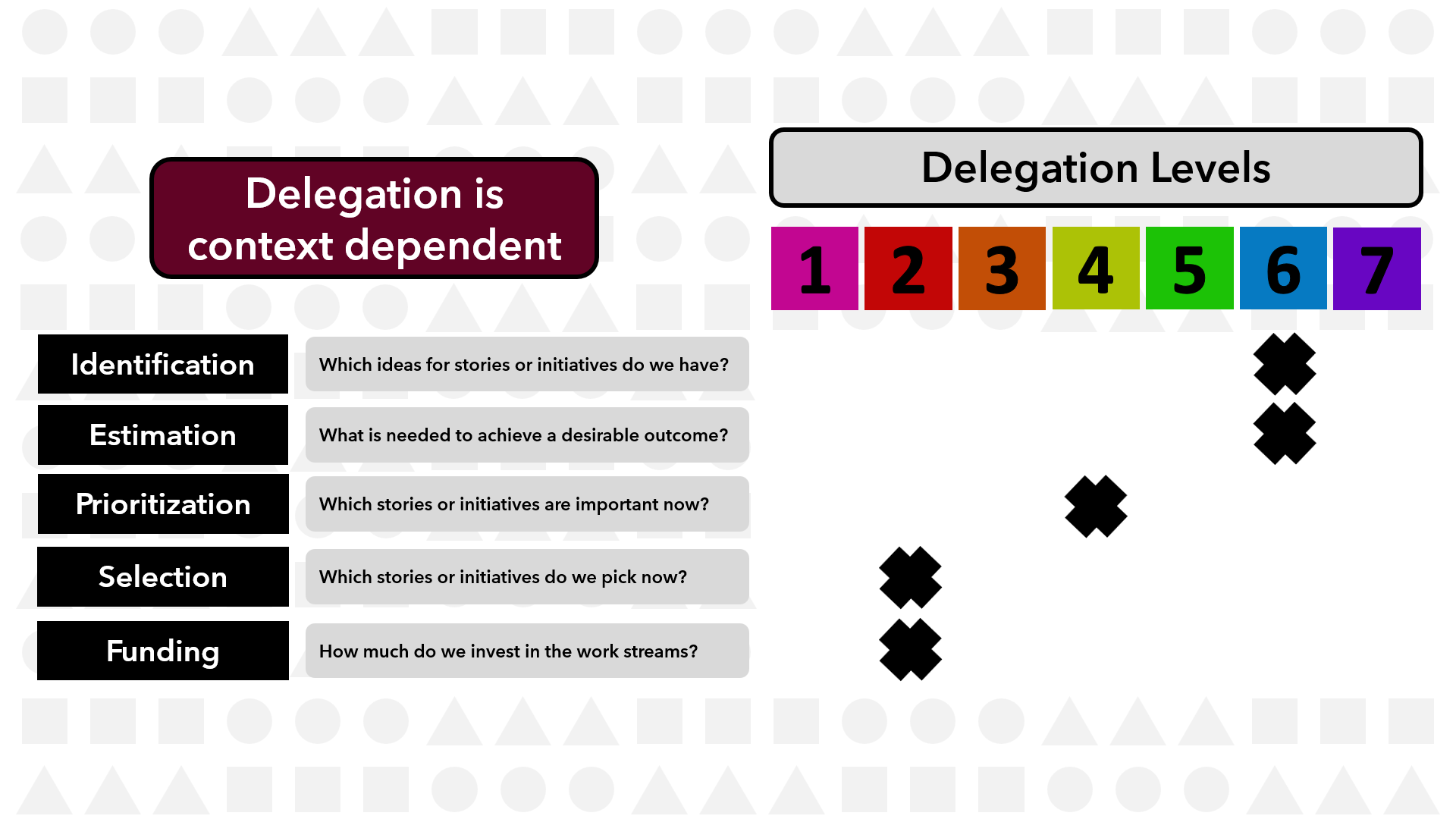We All Have Portfolios; Everyone Is a Strategist.
Author: Jurgen Appelo
I said it before, and I'll say it again.
Management is too important to leave to the managers.
For example, managers often see business strategy and portfolio management as exclusively done by managers. In most organizations, high-level strategy sessions, prioritization of new initiatives, and funding of programs and projects are commonly done in committees full of managers. At the same time, the more mundane tactical work and task execution are left to the lower-level teams. The collective mindset and culture treat organizations as machines built to achieve specific goals. Check out this comment I found in the SAFe documentation:
"Strategy is typically the responsibility of those executives who are ultimately accountable for business outcomes."
- SAFe 5.0 Distilled.
I disagree with the Scaled Agile Framework and traditional managers. Network organizations don't work that way. In living systems, strategies and portfolios are managed everywhere.
We Are All Strategists
I recently played another session of Wingspan with my family. I love the game, but I nearly always lose. This time, I tried a different strategy: focusing more on my birds' habitats and special powers and less on the round-end goals and bonus cards. It was a good try, but it didn't work out as I had hoped. My sister still won the game, as usual.
A strategy game such as Wingspan is an excellent metaphor for all the choices we face in our daily lives. As human beings, we have many options to survive and thrive and many risks and opportunities to be aware of. It is impossible to do everything we want with the limited time and resources we have at our disposal. I have a bucket list of hundreds of Places to See Before You Die, and I will be glad if I can see maybe a dozen of them in my remaining lifetime. I also have a list of a thousand best sci-fi and fantasy books to read, and I will be lucky if I can still finish fifty of them. This daily struggle with our time is why we have techniques such as the Eisenhower Matrix, Getting Things Done, the Pomodoro Technique, and so on.
I fully realize that what I just described is the "first-world" version of surviving and thriving in the 21st century. Many other people worry a lot more about what jobs to take, which person to marry, where to get food for their families, and how to keep a roof over their heads. Choosing from different options to maximize a positive outcome is strategy. Managing multiple options to enable alternative positive outcomes is portfolio management.
strategy: devising or employing plans toward a goal
portfolio: the options or securities held by an investor
Thousands of years of human experience with strategies and portfolios have culminated in profound wisdom reduced to simple sayings, such as, "Don't put all your eggs in one basket," "No plan survives contact with the enemy," and "Focus on your strengths, not on your weaknesses." Countless experts, gurus, and sages offer us advice on how to have better outcomes in our lives. And whether you do this consciously or not, your survival and success as a human being benefit from strategy. We all have portfolios of options, and everyone is a strategic planner.
Divide and Conquer
Fortunately, we rarely work solo anymore. We can share the challenge of strategizing with others. Through collaboration with family, friends, team members, and community members, we can split responsibilities and be more effective at addressing the risks and opportunities. This is why we have organizations!
Division of labor is one of the most successful inventions of humankind, not only in breaking up one process into sequential parts (the traditional interpretation) but also in having independent parallel processes organized around different options (a more agile interpretation).
In an agile context, portfolio management at the team level is straightforward. The self-organizing team decides which ideas to put on the backlog, how to prioritize the options, and how much time to spend on each idea. Finally, the team distributes work among its members, benefiting from a division of labor in both senses: sequentially and in parallel (sometimes even mixed). Together, they divide the work and collaboratively conquer their risks and opportunities. Easy-peasy!
Alas, things are only simple on a small scale. It all gets a bit more complicated with longer timeframes and larger organizations.
Investment Horizons
When your team spends all their time handling customer feature requests, they might not realize that competitors are outmaneuvering their product and that their work is doomed to irrelevancy. Likewise, when your team spends all their time running lean startup experiments, they might forget that their infrastructure needs security patches or that their toolset has three major updates pending. In other words, your team would benefit from time allocation across various investment horizons:
Maintenance: This is what a team does to update its product and infrastructure to keep it from deteriorating—for example, security patches, migration to another cloud service, or reducing technical debt.
Improvement: This includes continuous improvements in a team's current product. For example, adding a new payment method or allowing customers to define separate invoicing addresses.
Extension: We refer to generating new business by extending a current product line, for example, offering a scaled-down version of a B2B solution as a different cheaper B2C solution.
Disruption: Here, we refer to reinventing the business and replacing the current product—for example, a pivot from downloading to streaming or from a webshop to a peer-to-peer marketplace.
We could refer to the first two horizons (Maintenance and Improvement) as Current Product Development and the last two (Extension and Disruption) as New Product Development.
When your business consists of only one team, it has to pay attention to each of these four areas (if it wants to survive in the short and long term). Either different team members have to pick up work items across the four focus areas, or the entire team should now and then switch focus between them.
Other Focus Areas
The literature in Agile and Lean communities has often described how one team can survive and thrive in a fast-changing environment. But strategy and portfolios get more interesting when we work with multiple teams. The division of labor that was already useful at the team level becomes even more powerful and effective when we divide work across various groups of people.
In practice, large organizations commonly handle Current Product Development and New Product Development in different teams: some units focus on Maintenance and Improvement while other teams deal with Extension and Disruption. And the same applies to other focus areas.
I found at least ten different ways to define boundaries between teams or units:
Functional or role-based (for example: development, marketing, finance)
Product areas or product types (for example: search, payments, integrations)
Market segments (for example: B2B, B2C, B2G)
Channels (for example: retail, online, outlets)
Business models (for example: direct sales, subscriptions, freemium)
Regions (for example: NAM, LATAM, EMEA, APAC)
Seasons or time slots (for example: morning shift, night shift)
Customer journey steps (for example: discovery, activation, onboarding)
Tools and technologies (for example: web, mobile, embedded)
Investment horizons (Maintenance, Improvement, Extension, Disruption)
It will not surprise you that there is no one best way to organize teams and business units in an organization. Everything depends on context! The best organization design approach is to keep your structure as flexible as possible. Do not lock yourself into a specific form (which happens far too quickly when you assign middle managers to territories).
Whatever structure and boundaries you choose assume that they will be temporary.
Do you know even more boundary options? Let me know!
Now, Let's Coordinate!
So, you've decided to split responsibilities across teams according to product areas, market segments, customer journey steps, focus areas, or whatever. Great! Now what? How do you decide what gets done? Where the work flows? And how much it gets funded?
Coordination options
Coordination Option 1
The traditional approach is to place the responsibility of coordination with business managers, project managers, or portfolio managers. These managers decide which unit does what, and they manage the identification, prioritization, selection, and funding of the work streams. In this scenario, the managers are in control. This can work for a while, but as a hierarchical solution, it will slow the organization down at a larger scale. The business needs to stay agile as it grows; thus, the managers will have to delegate responsibilities to horizontally self-organizing teams.
Coordination Option 2
A more scalable approach is to let Crews in a Base coordinate their work among each other. One way of doing this is to have a dedicated Facilitation Crew (coordination team) help the Value Stream Crews (agile teams) manage their division of labor and dependencies. The Governance Crew (management team) delegates some or all of their responsibilities to the various teams, expecting them to figure it out with each other. In this scenario, the Facilitation Crew is only there to help. One example of this pattern is the standard solution of several Product Owners collaborating on a shared backlog of stories. But we can easily imagine several Program Owners collaborating on a shared set of projects or several Portfolio Owners collaborating on a shared pool of initiatives. The pattern is the same.
Coordination Option 3
A third option is coordinating the work in a Forum (like a guild or committee). In this case, representatives from the different Value Stream Crews occasionally gather to discuss the larger strategy and decide on what work should flow to which Crew. In this scenario, the teams do it all themselves. Again, the Governance Crew can delegate some or all of their responsibilities with the expectation that empowered teams will often make better and faster decisions. For example, Forums can coordinate customer journey steps or the tools and technologies across the different Crews.
Do you know more coordination options? If yes, let me know!
But Wait! It Depends on Key Decision Areas
Everything I discussed so far ignored that we can identify different key decision areas within strategy and portfolio management. The management team can choose which key decisions they want to delegate to whom and at which delegation level.
Identification - Which ideas for stories, projects, or initiatives do we have?
Estimation - What is needed for a good chance at achieving a desirable outcome?
Prioritization - Which stories, projects, or initiatives are most important?
Selection - Which of the stories, projects, or initiatives do we pick now?
Funding - How much do we invest in the agreed-upon work streams?
You can place responsibilities for these key decision areas in different parts of a business unit. Why would one team or unit do all of this? In fact, in my case studies, I often find that agile teams generate initiatives and estimates, prioritization is a cross-team responsibility, and selection and funding of top objectives are usually done by the management team.
And to make things even more complex, you can define these key decision areas per focus area!
Scaling Up to the Enterprise
Let's review the options you have for strategy and portfolio management:
Two ways to divide work across Value Stream Crews (sequential versus parallel)
Four investment horizons (Maintenance, Improvement, Extension, Disruption)
At least ten focus areas (Market segments, Channels, Business Models, Regions, etc.)
Three coordination options (Governance Crew, Facilitation Crew, Forum)
Five key decision areas (Identification, Estimation, Prioritization, Selection, Funding)
Seven delegation levels (Tell, Sell, Consult, Agree, Advise, Inquire, Delegate)
It's no wonder people find organization design overwhelming. 🧐
Now, how does all of this scale up to the enterprise level?
Well, it's complicated but not difficult. All of the above repeats itself in a fractal way at the next higher level.
Instead of dividing value streams over people who work together in Crews, we can divide them over Bases that work together in Clusters. Instead of teams focusing on specific product types, channels, business models, or regions, we could have clusters of Bases doing the same. Instead of having the portfolio coordinated with either Facilitation Crews or Forums, we can ask Facilitation Clusters or Assemblies to do this work at a larger scope.
All traditional strategy and portfolio management approaches draw a standard hierarchy of portfolios, programs, and initiatives. They may use different terminology, but it all comes down to the same: strategy is for higher-level management, and execution is for the lower levels. It is a mechanical approach to organization. Here, we see another example of this kind of thinking:
"The enterprise funds portfolios and therefore has the highest level of governance authority."
- SAFe 5.0 Distilled.
I disagree with the traditional view on strategy and portfolios. The complex systems approach is that vision, strategy, tactics, and execution exist at each level of the organization. The only things that change are the scope of the options and how we want to handle the division of labor. We are strategists and portfolio managers at all levels: individual, team, business units, etc. The patterns are the same. Only the scope widens when we scale up.






